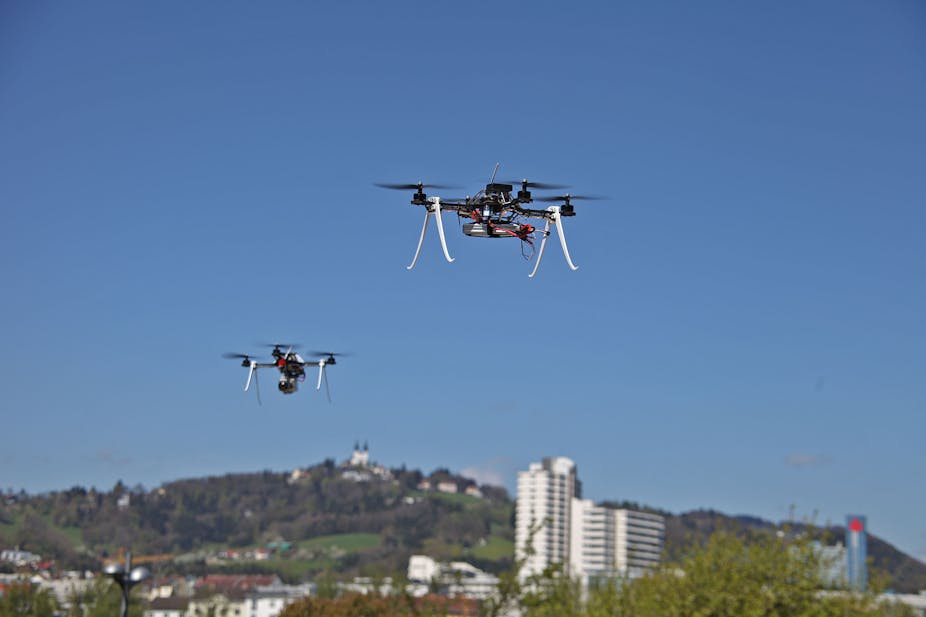Robotic aircraft, or drones, are a much-debated military technology. But while this change in military capability challenges our shared senses of threat and protection, robotic aircraft have also been changing the way we do all kinds of other important things.
Much scientific research, especially in Earth sciences, already makes extensive use of manned aircraft, often military cast-offs, and is beginning to see the potential for use of aerial robots.
For instance, we will be using a robotic helicopter to take air samples above Ascension Island to help unpick the global budget of methane, a potent greenhouse gas. We are also involved in the use of the ultra-long-range Global Hawk robotic aircraft for making measurements of air flowing into the ozone layer high above the tropical west Pacific.
Others have used drones to study volcanoes, ice sheets, or the pall of brown air that flows out from south and east Asia. There is a growing sense that drones will make a big difference in how we sense the environment. In providing strategies to answer some of the most pressing issues in climate change and natural hazards this research addresses some of the most profound existential issues of our time.
All that stands between us and these new robot deployments is uncertainty about the rules of engagement: how to operate drones in spaces shared with people.
Many civil and commercial uses for robotic aircraft have been identified: there are clear benefits for taking the air crew out of “dull, dangerous, and dirty” operations. Repetitive operations such as scanning fuel pipelines for leaks can tax human endurance to the point where safety can be compromised. Dangerous operations such as tackling forest fires can expose air crews to severe risks. Dirty operations such as less immediately threatening pollution plumes can also put crews in danger. Drones can use the weight saved by not carrying people and their life-support systems to greatly extend range and time on duty.
The major challenge to civil use of robotic aircraft will not be overcoming our distaste for handling the weapons of war – see how readily we’ve taken to GPS – but rather overcoming our fears of allowing robots into our societies. We are, quite rightly, nervous of ceding control of any large object to artificial intelligence.
It is comforting to know that there is a pilot at the helm of a passenger aircraft. However, putting a pilot at the helm of a long, monotonous mission in a remote location may not always be the lowest risk option. Testing public acceptance of drones in civil and commercial operations such as this should not be forgotten among the arguments on war.

